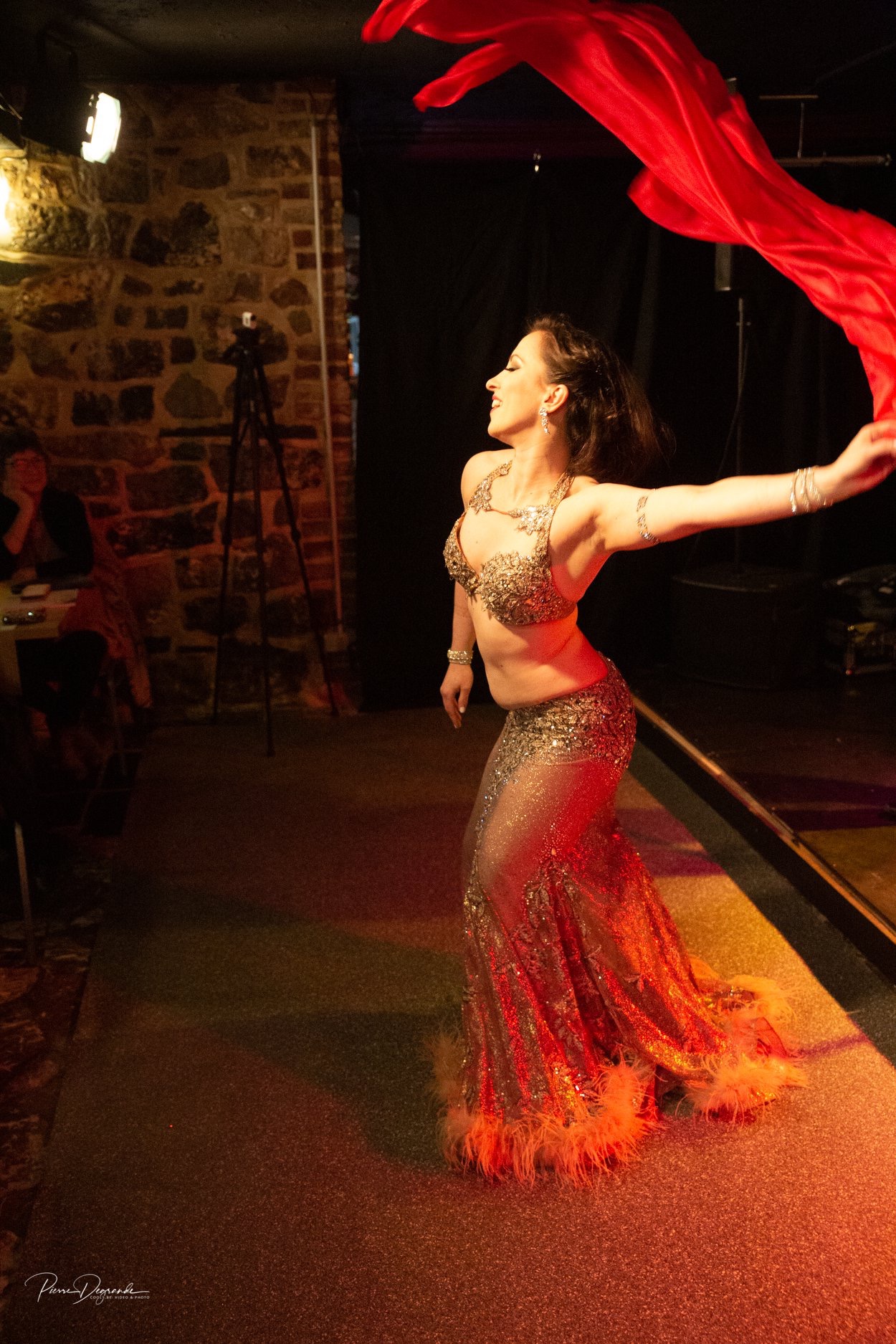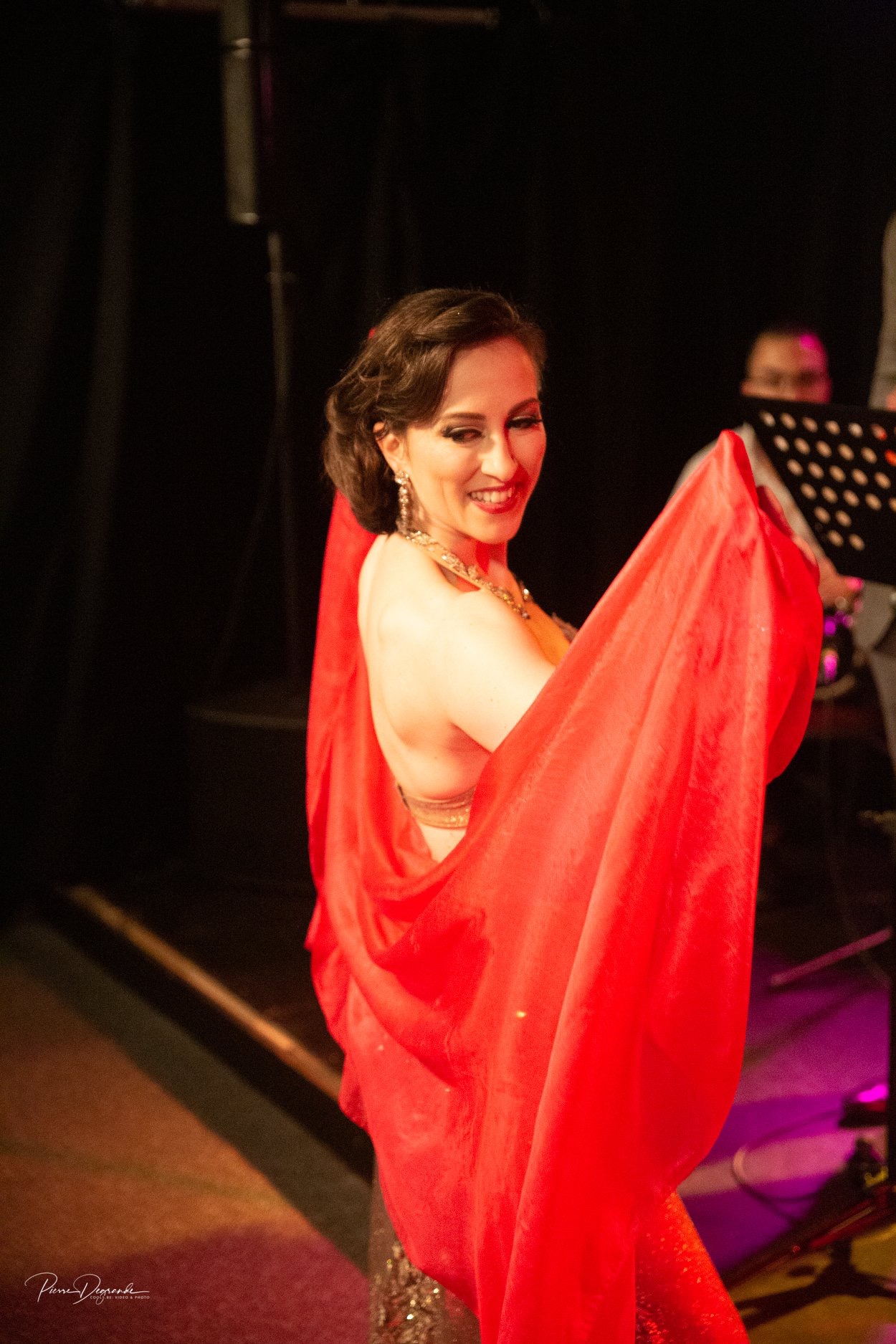This post is inspired by a wonderful live music dance performance experience this weekend.
I was lucky enough to get the chance to perform with Rakiya’s Arabic orchestra at Noemie Danse‘s Oriental Roots festival in Belgium – along with a few amazing fellow dancers.
It was an enriching and exhilarating experience.
Below are a few tips (ie notes to myself :)) on how to mentally prepare oneself for (and thus have all the more time/headspace to deeply enjoy!) such a unique opportunity.

Expect the unexpected
This is part of the fun 🙂
There will always be surprises, especially when multiple factors (and people!) are in play, so whether you dance with live music for the first time in your life (exciting!) or have the chance to do so frequently:
being mentally ready for anything will put you in a mindset of openness, learning and adaptation.
Know your music
The more versions of your favourite song you can find, listen to (and dance to!) the more you will be able to enjoy the subtleties, variations and slightly different nuances that will occur when the song is played ‘live’.
If you can find the original (preferably full) version of ‘your’ music, all the better.
Arabic songs are often played in ‘modules’, so parts of the music can be repeated, reshuffled, or omitted(!) ‘on the spot’ – depending on the mood of the evening, the musicians, the audience, and of course the dancer.
Knowing this, you can communicate with the musicians before/during your performance or at rehearsals (if you get the chance!) to ensure your favourite parts will be included, and/or to choose the section of the song (especially if the original piece is a longer one) where you’d want to start your performance.
That being said – it is still best to be mentally (and physically) prepared for surprises!
Know your lyrics
Even if you don’t speak Arabic, it helps to know a few key phrases and words that often occur in lyrics, and for most classic songs you can find either translations or transliterations online nowadays.
Or – if you are extra lucky – perhaps even a youtube version with subtitles 🙂
The language of love is universal though, so listening to the intent of the singer’s voice and being open to the ‘feel’ of the music can give you a lot, even before you learn the meaning of the lyrics.
(But still – it’s worth the peace of mind to look up the lyrics of the song – they will inspire you, too!)
Work on you basics
I’ve found that one of the best ways to practise for an improvised (by the musicians, by myself, or both!) performsnce, is to hone in on the basics.
This will improve and ‘clean up’ your dance vocabulary, and at the same time help expand your range of motion and movement ‘depth’.
More importantly though, it will automagically deepen the connection between your senses and your body, and will feel more at ease in general because of it.
This, in turn, will free your mind to be more present and in tune with the music, the audience, and yourself during your performance.
It still takes a bit of courage to ‘let go’ of a set dance plan.
When dancing it’s not about the complexity of movements you can do (although it can be great for practise to challenge yourself!), but about the movement quality, connection to the music in the moment, feeling comfortable enough to trust your body to react, and most of all to a bit (or a lot!) of your Authentic Self.
To help with this, be sure to also..
Get a feel for the environment
If you have the chance, try to arrive well on time so you are able to:
- Go say ‘hello’ to the orchestra/band leader (if possible), so they know who will be dancing to which song, and whether you’ll be startin ‘on’ or ‘off’ stage
- Scope out (from near or far) the area you’ll be performing at (to see how much space you’ll have, what the flooring is like, where the audience will be, and whether there are any obstacles (cables, steps, low hanging lamps, pets, children, camera tripods, wait staff, tables) to be aware of during your performance (safety first!)
- Decide where (not just when) you’d like to enter and exit the stage/performance area (and communicate this to the stage manager! I forgot to to this last Saturday and caused some confusion ?)
- Practise in your costume at home a few times – learn how it moves and make sure that it fits well – and visualise how it will feel to dance with it ‘on the spot’. This relates to obstacle management as well as to environmental- and physical awareness
These are all very practical things you can do beforehand for feeling more ‘in tune’ with your performance.
They serve to remove a few very common possible distractions before you dance, and help to familiarise yourself a bit with your environment and your co-artists.
Have a plan B (and C)
And maybe also D. This refers to all of the above.
Enjoy the moment
Time will fly by. Remind yourself to enjoy the experience no matter what.
If you tend to get a bit nervous before dancing (as I do!), here are a few more simple things you can do to help with that:
- Make sure to stay hydrated, as being thirsty can feel like extra stress to the body and add to your jitters
- Sometimes a well-timed snack (a bit of fruit, or anything else that does not get stuck in teeth :)) can help – on performance days it can be easy to forget to eat, and evenings may run late
- Take enough time to warm up physically, and – perhaps even more importantly – be sure to give yourself a moment to breathe and ‘just be’ before it is your ‘go time’. It will help you connect to your body, the music, and the moment throughout the performance.
- You can also (re)take this moment – at any time it’s needed – during your dance. There is no need to rush.
- Know that being a bit nervous is perfectly normal, and remind yourself that having a bit of an adrenaline rush before your dance can also be of good use – it will boost your energy and sharpen your senses.
- Remind yourself why you are there (you love dance! right? and the music, and the unique exchange of energy and (he)art that is about to happen)
- Trust that your audience is on your side. If you relax and enjoy the moment, they will do so, too.
- Know that whatever happens, every moment in life is an opportunity to learn, and to (re)connect.
Now go forth, dance, and enjoy 🙂



Pictures by Pierre Degrande
How about you?
What are the things you have learned during/about the ‘live’ circumstances of your art?
